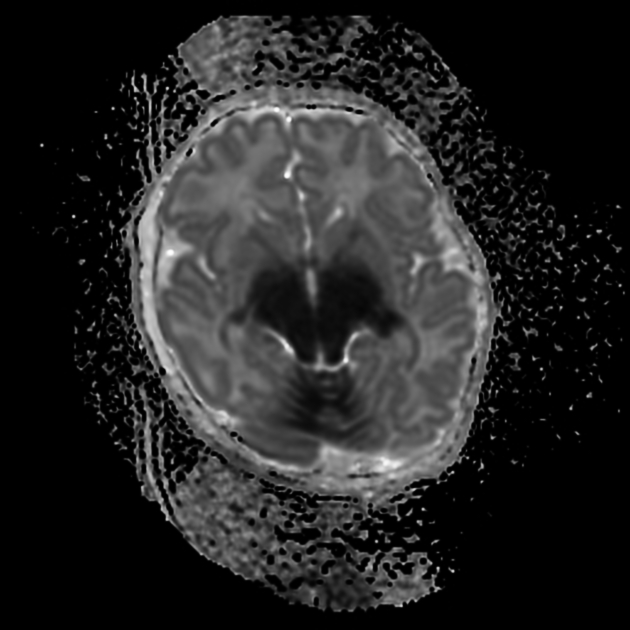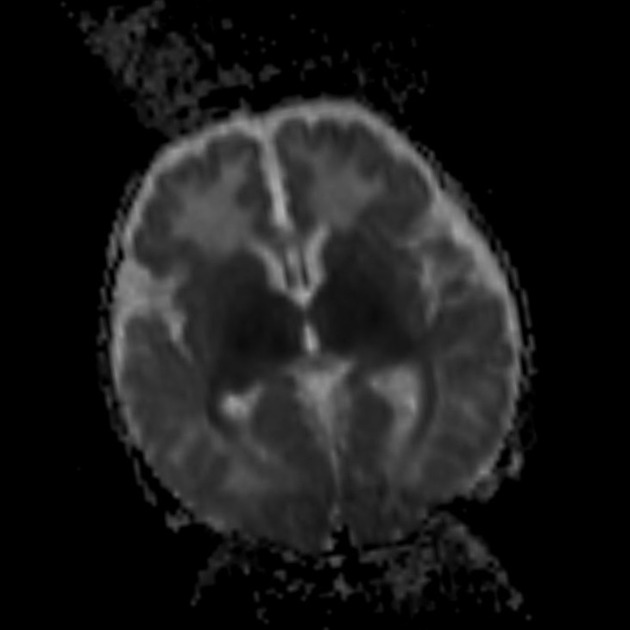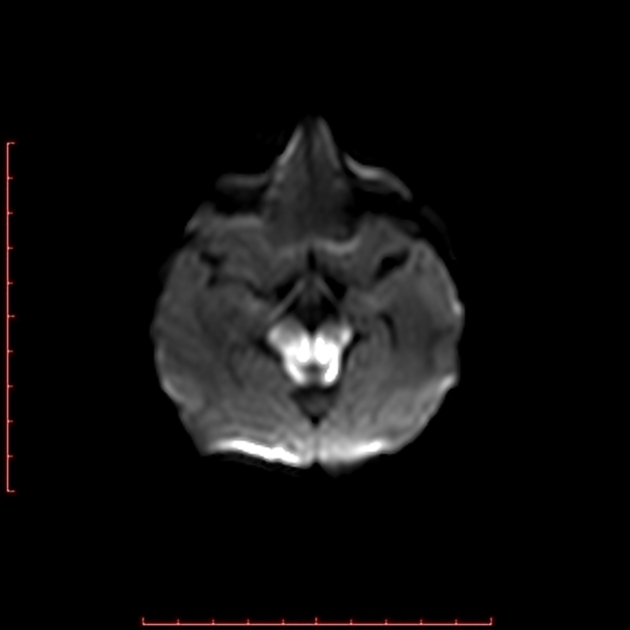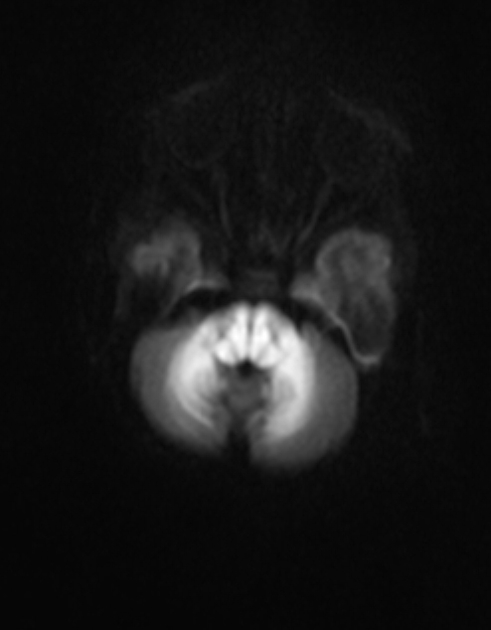Maple syrup urine disease (MSUD) is a very rare metabolic disorder. It is an inborn error of amino acid metabolism, which classically affects the brain tissue resulting in impairment or death if untreated.
On this page:
Epidemiology
MSUD is a very rare disease in the general population, occuring in 1 in 185,000 births, but is much more frequent in certain groups with a high rate of consanguinity, being as common as 1 in 380 births amongst North American Mennonites 9, 10.
Clinical presentation
It usually manifests itself within the first week of life with 8:
poor feeding
vomiting
ketoacidosis
hypoglycemia
lethargy
seizures
characteristic odor of maple syrup in the urine or cerumen
Intermittent forms of the disease may present later (5 months to 2 years of age) and can be precipitated by concomitant infection or a high protein intake 8.
Pathology
Maple syrup urine disease is due to mutations in any aspect of the mitochondrial branched-chain alpha-keto acid dehydrogenase complex 8.
Genetics
It is inherited in an autosomal recessive pattern and various different genes have been implicated 1.
Serology
There is elevated plasma concentrations of branched-chain amino acids (leucine, isoleucine, and valine), allo-isoleucine, and alpha-ketoacids.
Radiographic features
MRI
MRI brain may show the characteristic pattern of edema present in MSUD. Two forms of edema may be seen in MSUD:
intramyelinic edema: believed to be from myelin splitting due to accumulation of branched-chain key acids and water molecules between layers of myelin 8
vasogenic edema: usually due to disruption of the blood-brain barrier during an acute metabolic crisis or decompensation 8
Signal characteristics include:
-
T1: low signal intensity
predominantly in the cerebellar white matter, cerebral peduncles, dorsal brainstem, posterior limb of the internal capsule, thalami, globi pallidi, and perirolandic cerebral white matter 8
-
T2: high signal intensity
in the locations described above 8
DWI: the posterior limbs of the internal capsules and optic radiations and the central corticospinal tracts within the cerebral hemispheres exhibit high diffusion signal
MR spectroscopy: single-voxel proton MR spectroscopy may show the presence of branched-chain amino acids and branched-chain alpha-keto acids resonating at 0.9-1.0 ppm, especially during a metabolic crisis 1,2
Treatment and prognosis
Management involves dietary changes, such as life-long dietary intake restriction of foods with branched-chain amino acids (especially leucine), and early treatment of metabolic decompensation, with agents such as intravenous glucose 9.









 Unable to process the form. Check for errors and try again.
Unable to process the form. Check for errors and try again.